- recipe-stitching-en
Downloads:
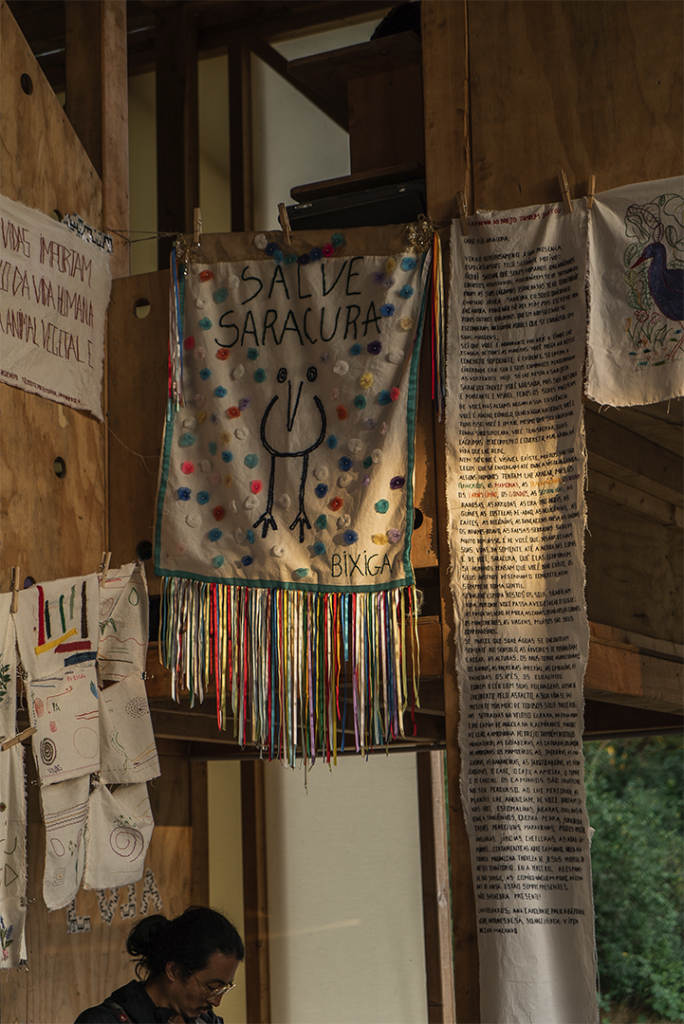
Embroidering is a tactic that exceeds the individual stitch. Solange Lisboa teaches us to take the line for a walk, to follow the stories and materials of a river and its struggles. Since early 2024, Solange has been leading a weekly stitching gathering in a community garden on the banks of the Saracura river in São Paulo. The collective goal has been to create a “Herbarium of Healing Plants”, which documents all the riparian plants sprouting from the soils and sediments of the former river landscape, including their medicinal and spiritual healing powers, which are often forgotten or covered-over, together with the river.
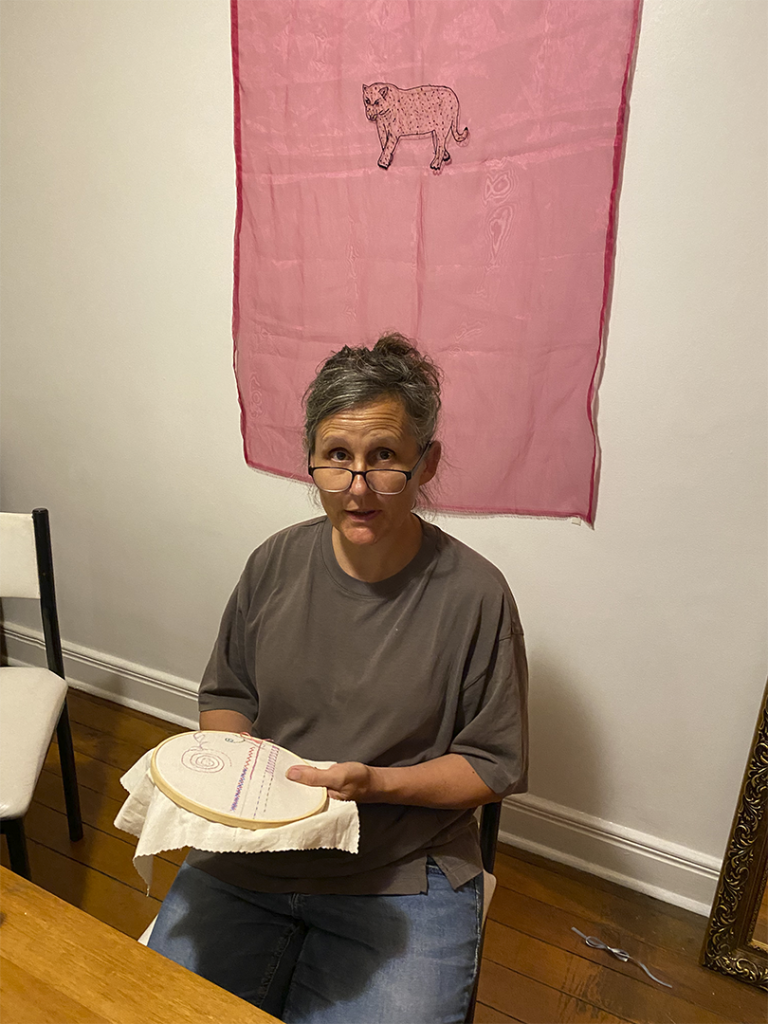
During our meeting in São Paulo in 2023, riparians from Floating and Labtek learned stitching techniques from Solange. How might this craft bear witness to the presence of the river and its vegetation? And how might it also record political demands? In thread-based practices like weaving, quilting, or embroidery, lies a potential for coming together as a community and sharing stories while keeping your hands busy. The resulting textiles carry interwoven intimate and collective stories, entities, and desires—grounded in shared tactics of riparian resistance. In this way, stitching becomes a collective healing practice.
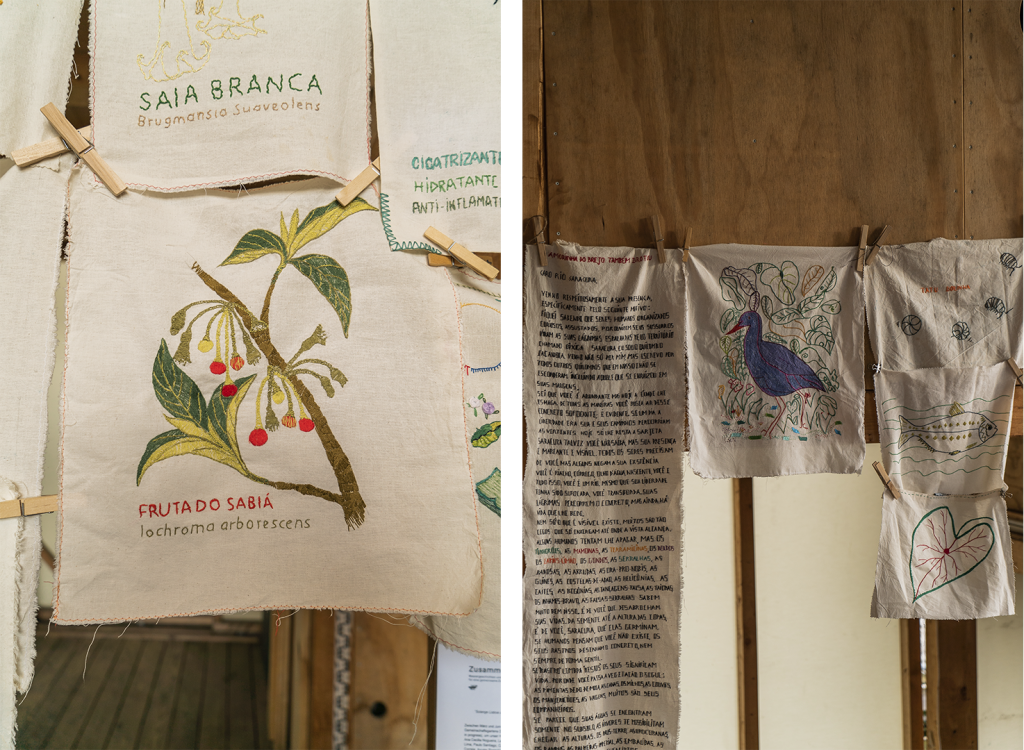
In 2024, species from the Brazilian (or Saracuran) herbarium travelled to Berlin and were exhibited in the so-called urban forest of Floating University. There, they encountered curious visitors, as well as local plant and bird species nesting in the structure’s pavilion.
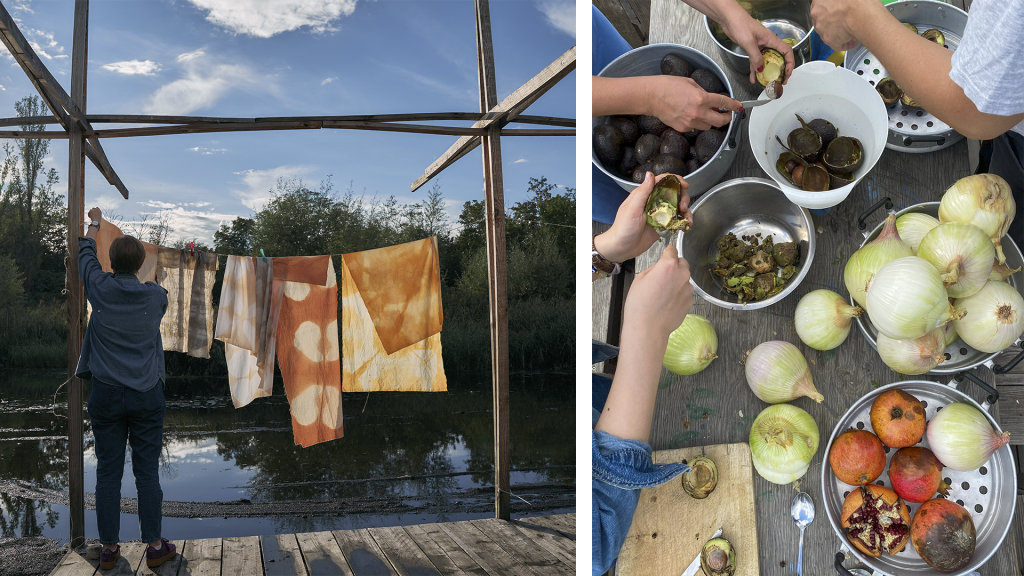
Textile practices at Floating have evolved over several years—emerging from the site itself through colors, materials, patterns, and use. One such lineage began in 2022 during the “Day of the Waste” program led by textile designer Garance Maurer. There, fabrics were naturally dyed using food scraps. These cloths were later used as tablecloths to serve a dinner prepared entirely with leftover produce from local markets.
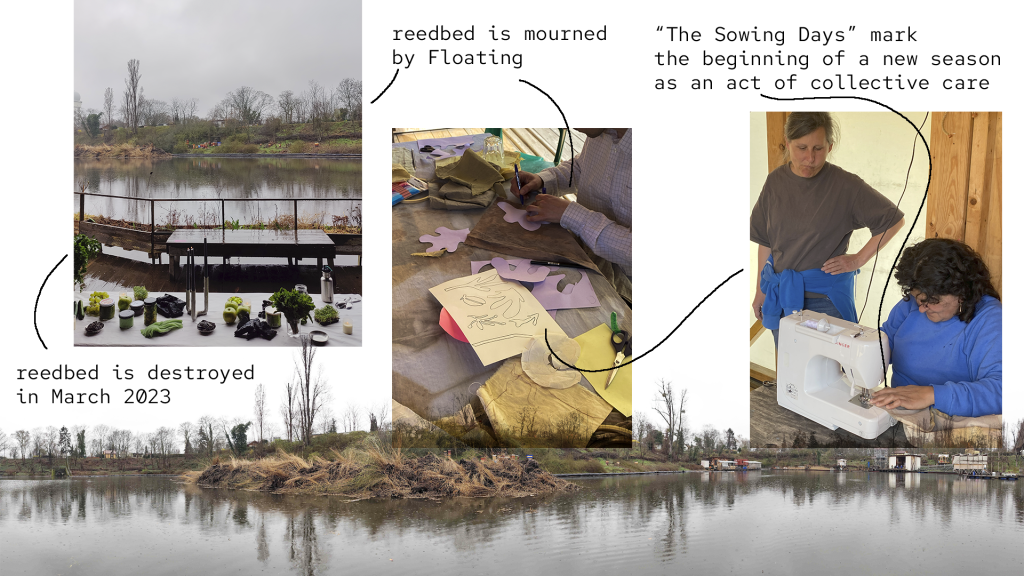
Over the winter, the dyed pieces were stored, only to be sewn together in spring by members of the association—a gesture of collective care and seasonal preparation to reopen the site, since the prominent riparian ecology of reeds has been cut down.
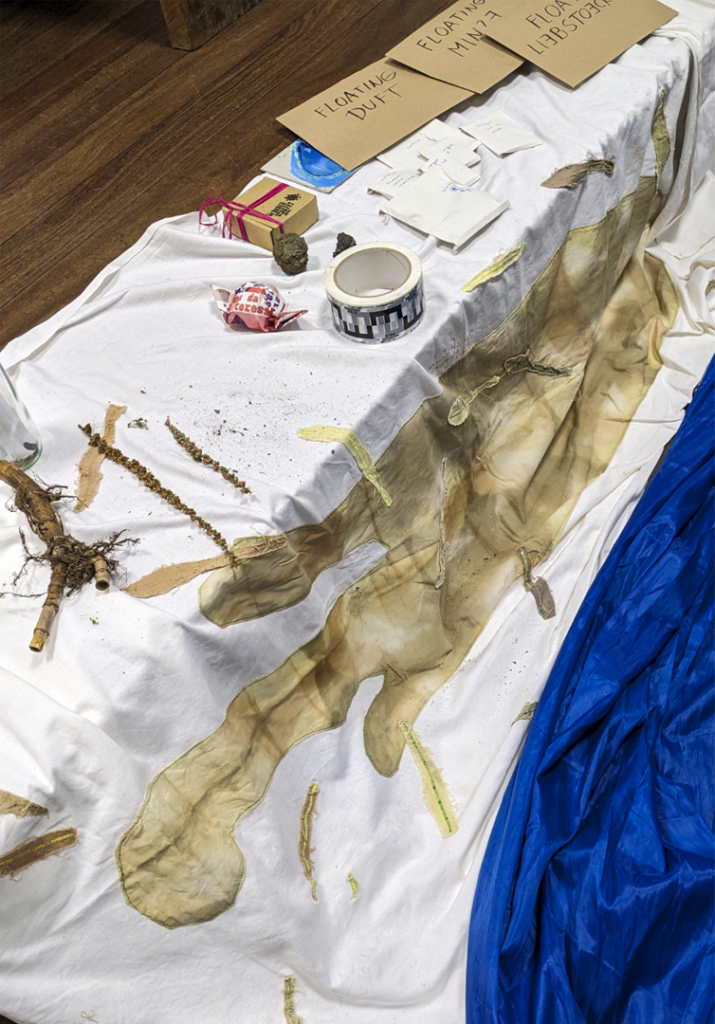
The tablecloth eventually came to show the outline of the reed bed destroyed in spring 2023. In autumn of that year, it travelled from Berlin to São Paulo, and then returned to Floating. During the Planetary Confluences festival in June 2024, we held an embroidery workshop atop the cloth. Soon after, it returned to São Paulo, where Solange and her group added new embroidery—stitching traces of riparian plants from the Saracura River. The cloth came back once again for an exhibition at Spore Initiative in Berlin in November 2024, and now rests at Floating University.
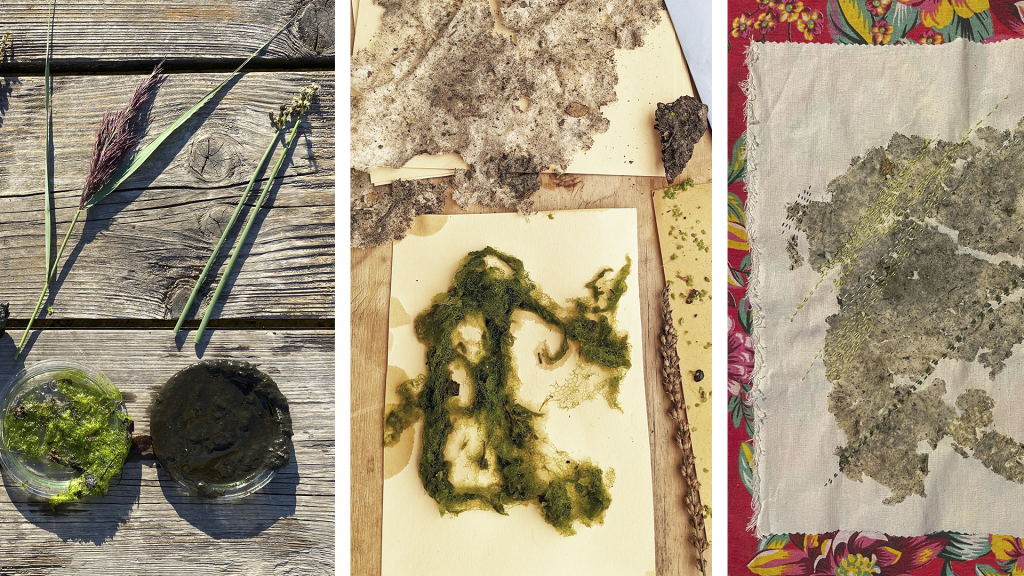
One embroidered piece tells the story of an algae collection: brought from Berlin to São Paulo after an exchange on embroidery as political practice, a single piece of algae was preserved on cloth. In summer 2024, the embroidered algae travelled back to Berlin, where, inspired by the Planetary Confluences festival, it was reworked into a riverine landscape.
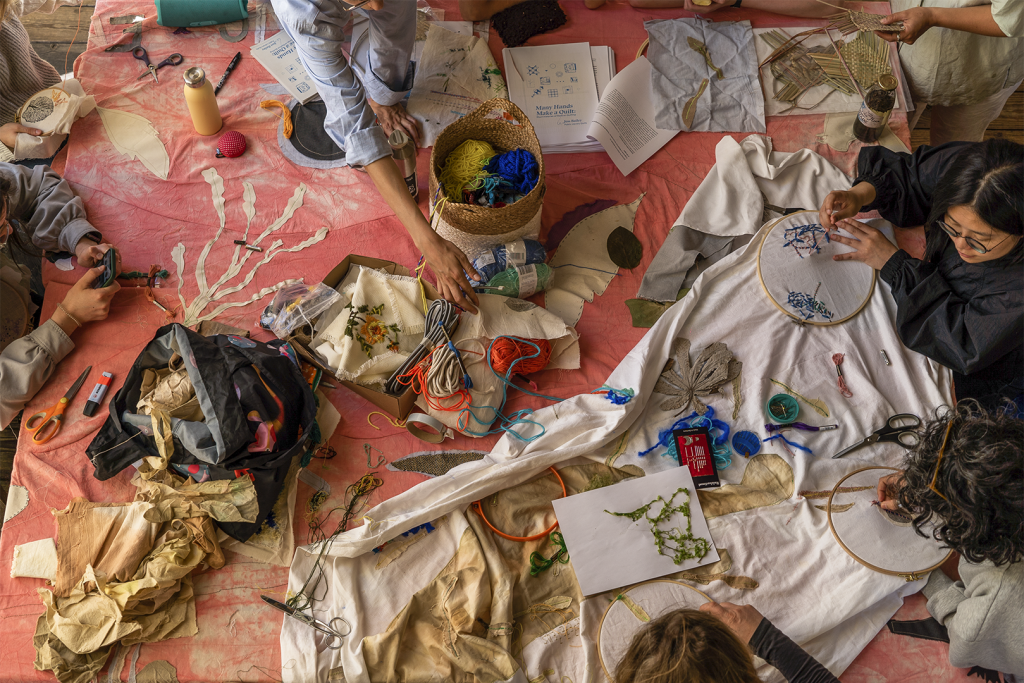
During the festival, we also created space for shared embroidery sessions, where participants read and discussed how textile practices can support political and activist perspectives. The riparian invitation extended even further—to Marseille, France—where we collaborated with the Gamarres collective, caretakers of the toxic and forgotten Aygalades River.
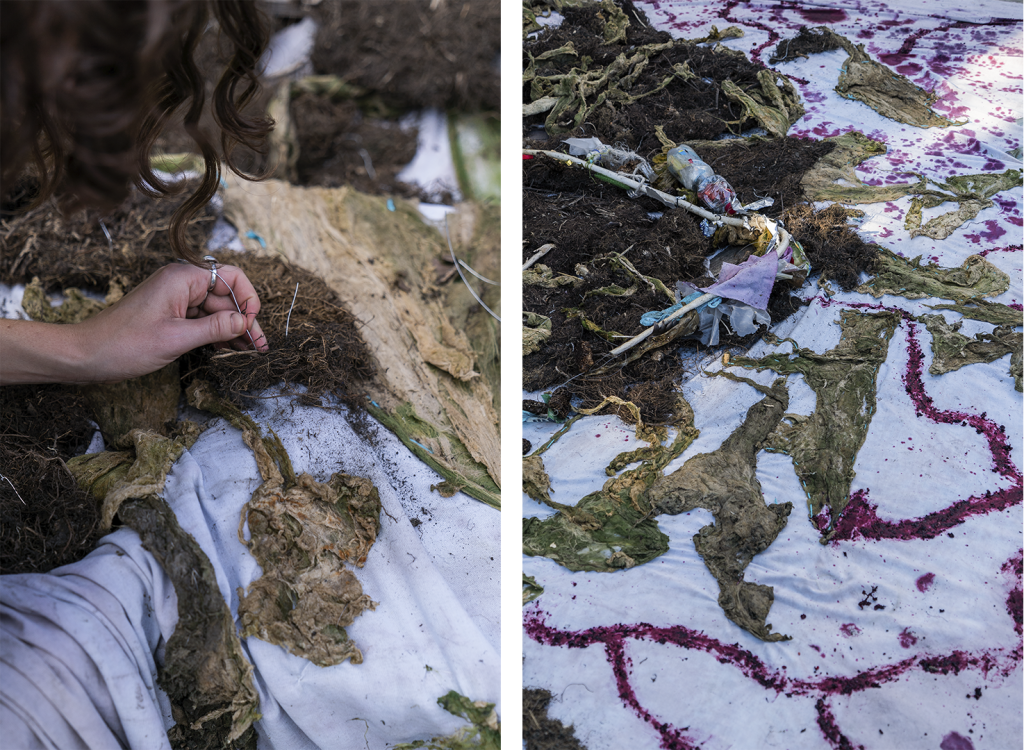
Our visitors, now friends and comrades from the MITR collective, are known for animating creatures from the debris of forgotten waterways. At Floating, they brought to life a multi-headed bear—an ancient being said to sleep beneath the concrete and algae layers of the basin. Awakened by our call, it was hungry for the berries of the floating forest.
In this case, embroidery became not just a creative act to tell and share a story—but also a space to question materials, their origins, value, and transformation. The bear-creature became central to our collective parade, stitching together myth, memory, and resistance.
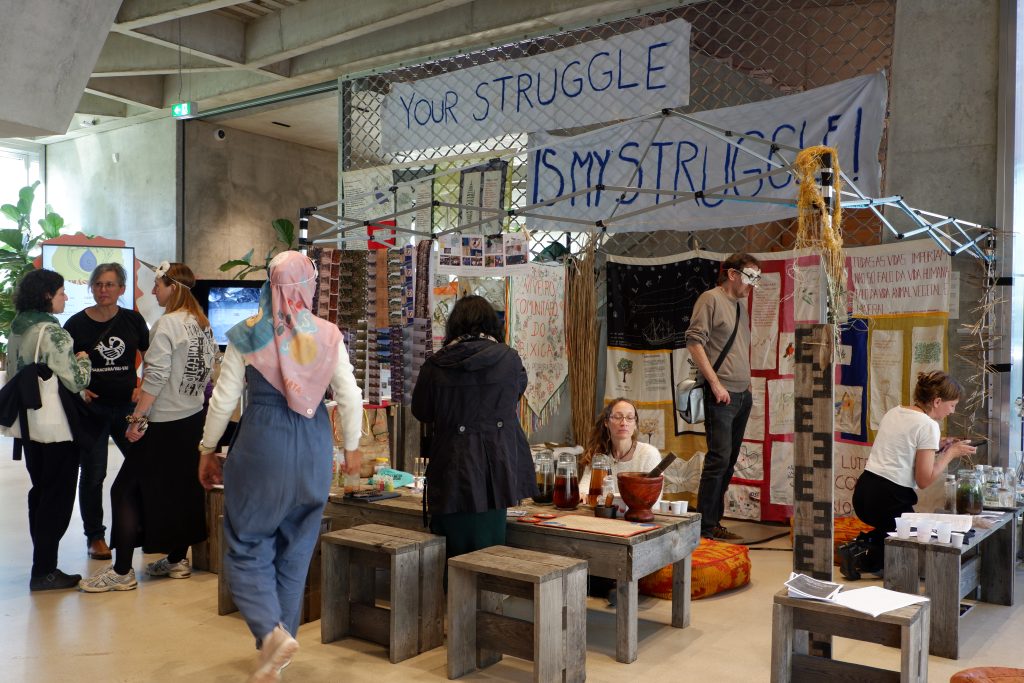
At the Planetary Design exhibition at Spore Initiative in Berlin, we hosted a gathering in the spirit of a warung—a format we learned from our friends at Labtek Apung. In Indonesia, a warung is a modest, often informal space for selling and displaying small handmade objects. For us, it became a method for stitching together distant yet connected struggles in space. Objects, stories, and tactics from different territories shared one table—each carrying traces of riverine resistance, care practices, and collective making.